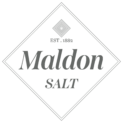Search engine optimisation (SEO) can be a touchy subject among brands, agencies, and even copywriters in 2023. Google has made attempts to simplify the business of getting noticed online in recent years with new algorithms like BERT and its helpful content update. These aim to ensure that relevant, useful, high-quality content that directly addresses search queries ranks highly in search engine results pages (SERPs). Nonetheless, the field of SEO is still subject to much mystification. Of course, it doesn’t help that search engines are constantly evolving and are often very selective about the information that is shared with users.
This can give rise to persistent myths in the field of SEO that, because they are so hard to directly disprove, can be taken as gospel by brands eager to do anything they can to establish themselves online. As such, many of these myths have become entrenched in some SEO practices for far too long. At best, adhering to these practices can be a waste of your valuable time and resources. At worst, they can actively hamper your efforts and stymie your rankings.

Let’s take a look at five particularly tenacious myths that we should all put to bed in 2023.
It goes without saying that being in position #1 on a search engine results page is hugely desirable for businesses. After all, what clearer sign is there that your website is more trusted by users than those of your competitors?
While studies show that over 25% of search engine users will click the first listed result in SERPs, click-through rates (CTRs) for second, third and fourth place are still worth pursuing at 15.7%, 11% and 8% respectively. At the lower end of the top 10 CTRs appear more meagre at 5.1-2.5% but this could still mean a lot of users alighting on your web page if you aim to rank for high-competition keywords.
Once you have established a presence on page one of a SERP, your efforts may be better spent on boosting conversion rates and reducing ‘pogo sticking’ than scrambling to get to page one.
“Content is king”. Thus spake Bill Gates in 1996, and the internet has taken him at his word ever since. Gates’ essay referred to the way in which the internet enabled companies of all shapes and sizes to establish and monetise their online presence through the creation of new content. A phenomenon that we all take for granted in the 2020s. Today, however, many brands have come to read “They who create the most content is king”. For a while, that may even have been true. Reliable and authoritative sources tend to produce content at volume, and search engines may have used this as a signal of a source worthy of ranking in SERPS.
Unfortunately, however, this gave rise to a mentality that all content had the same value in the eyes of search engine crawlers. Thus, the content game became one of sheer volume and not using content as a medium to generate added value.
Will producing more content improve your rankings? Possibly. But only if it is of quality, yields unique insights and encourages meaningful interaction and sharing. Cramming your website with low-cost, low-quality copy from overseas content farms or over-relying on AI copywriting tools will not necessarily curry favour with Google or other search engines.
Indeed, websites that are suddenly populated with a dramatic increase in AI-generated content may be penalised. Generating long form content like blog posts and white papers is a great opportunity to add value for your customers and new prospects. Brands should treat it as the opportunity it is rather than an opportunity to game search algorithms. In other words, stop generating content for search engines and start writing quality copy for human readers.

A company’s blog can be an invaluable resource. It can establish the business as a useful and authoritative resource. It can promote discourse on social platforms, and strengthen relationships between customers and the brand. Moreover, it can be a fun way to give the brand a sense of personality and provide some much-needed added value in a competitive landscape.
This is a roundabout way of saying that blogging is its own reward in many ways. What’s more, updating your blog with high-quality content on a regular basis can only improve your SEO.
In recent years, however, a culture of blogging for SEO’s sake has arisen, with brands churning out new content on a near-daily basis under the assumption that Google only values fresh new content.
While fresher content may be more accurate, up-to-date and relevant to search queries, search engines don’t necessarily rank fresh content just because it’s fresh. While new, high-quality content is great, be wary of sacrificing quality for volume as you churn out post after post just for the sake of creating new content.
Don’t be afraid to take the time needed to create high-value content and make your content strategy a mix of timely and evergreen content.
Google’s helpful content update in August 2022 signalled to content creators that they should prioritise the creation of high-quality relevant content over technical trickery to climb in the rankings.
Make no mistake, it’s great that Google rewards unique, engaging, high-quality content. However, that doesn’t mean that businesses should abandon their SEO efforts beyond the page. Off-page/off-site SEO is still an important discipline that brands should master to grow their audience and improve their rankings. Guest blogging, local listings, social media marketing and other link building exercises are still crucial in growing your reach and ensuring the kind of engagement with your content that signals trust and authority to search engine crawlers.
Likewise, now is not the time to put the technical side of SEO on the back burner.
Optimising your site architecture, and ensuring that your website is fast and responsive can work wonders in facilitating the behaviours that matter to search engines. A well-designed website that performs well is more likely to direct users to the content that matters to them and encourage users to move around the site architecture exploring and consuming more content.
It’s easy to see SEO as a destination rather than a journey. Ranking on page one of a Google search page can be a wonderful feeling. But once this goal is achieved, where do you go from there? One thing’s for sure, you can’t expect to do nothing and still remain on page one. Your competitors may create a new page that outranks yours, a new technical innovation could make your blog post less relevant to a search query, or technical issues could cause a page to dip in SERP rankings despite there being no issue with the content itself.
What’s more, search engine algorithms are constantly changing, and their criteria for quality online content may change from one day to the next in ways that negatively impact your website.
It’s important to treat SEO as an ongoing exercise. Your approach should constantly change and evolve in the wake of new search engine updates, changes in user behaviour and the technical demands that come with an uptick in traffic.











